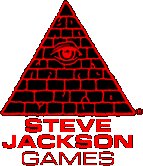


















|
You can find an index of all the GURPS bibliographies we have online here. If you spot any broken links or other problems with this page, please report them to webmaster@sjgames.com. Bibliography for GURPS Disasters: Meltdown and FalloutNuclear and radiation accidents, as opposed to nuclear war, have been comparatively rare subjects of "serious" fiction. More often, the subject is used as a menacing backdrop to a conventional story of encroaching disaster rather than as the primary focus of attention. The nongame books listed here are nonfiction, with one exception. BooksArnold, Lorna. Windscale 1957 (Palgrave, 1995). The official history of the fire: why it happened, how it progressed, and what the inquiries said afterward. Eisler, Ronald. The Fukushima 2011 Disaster (CRC Press, 2012). A quick introduction to the plant and the accident, with notes on radiation effects and how these varied from other major incidents. Hatamura Yotaro et al. The 2011 Fukushima Nuclear Power Plant Accident (Woodhead, 2015). A detailed look at the power plants, the damage done to them, and ways in which the radiation release might have been avoided. Howlett, John. Maximum Credible Accident (Hutchinson, 1980). Fiction. A senior British civil servant tries to decide on the safety of the new fast breeder reactor, while an experimental plant in France is slowly building up to catastrophe. Ingram, W. Scott. The Chernobyl Nuclear Disaster (Facts on File, 2005). A lightweight introduction to the events of 1986. Suitable for the GM in a hurry, but do not expect detailed analysis. Mould, R.F. Chernobyl Record: The Definitive History of the Chernobyl Catastrophe (Institute of Physics Publishing, 2000). A comprehensive guide to the reactor design, the accident itself, attempts at remediation, and the consequences to humans and the environment. Rhodes, Richard. The Making of the Atomic Bomb (Simon and Schuster, 1988). A history of the Manhattan Project and what led up to it, but also explains the physics of nuclear fission in some detail. Walker, J. Samuel. Three Mile Island: A Nuclear Crisis in Historical Perspective (University of California Press, 2004). A moment-by-moment analysis of the cascading failures that turned a stuck valve into a core meltdown. GURPS SupplementsBurke, Christopher J. and Garitta, Robert J. GURPS Autoduel, Second Edition (Steve Jackson Games, 1996). Most of the nuclear missiles were destroyed in space, though there were exceptions, as seen in the glowing ruins of Poughkeepsie, Indianapolis, and Colorado Springs. Nuclear power plants keep the cities going and will be tempting targets for saboteurs. Elliott, Paul and McCubbin, Chris W. GURPS Atomic Horror (Steve Jackson Games, 1993). Expands on cinematic mutations, and on things which can go wrong even when everyone agrees atomic power is the Way of the Future. Ford, John M., et al. GURPS Y2K (Steve Jackson Games, 1999). Covers apocalypses, including software-induced multiple meltdowns and ways to survive afterward. Levine, Jason. GURPS After the End 1: Wastelanders and GURPS After the End 2: The New World (Steve Jackson Games, 2016). Deals with the survivors after the collapse of civilization; even if the end wasn't nuclear, they will still have to cope with abandoned and decaying power plants. Marsh, Steven (editor). Pyramid #3/3: Venturing into the Badlands (Steve Jackson Games, 2009) and Pyramid #3/88: The End Is Nigh (Steve Jackson Games, 2016). Post-apocalyptic gaming advice, including long-term viability of nuclear weapons and power plants. Pulver, David. GURPS Reign of Steel (Steve Jackson Games, 1997). Fallout from the Final War, nuclear weapons from the more unhinged zoneminds, and tank-killing particle-beam strikes from Juggernauts are just some of the radiation hazards of this hellish world. GURPS Reign of Steel: Will to Live updates it for Fourth Edition. Woodward, Jonathan. GURPS Ogre (Steve Jackson Games, 2000). When every infantryman has a satchel nuke and tank guns fire saturation nuclear cluster rounds, fallout isn't so much a hazard as a way of life. FilmsAtomic Twister (Bill Corcoran, 2002). A tornado hits a nuclear plant, causing damage which threatens a meltdown. No film with "Atomic" in the title is likely to be a masterpiece, but this one is an exemplar of how the script can ignore multiple real-life safety systems in order to create a situation where heroes have to act. Chernobyl Diaries (Brad Parker, 2012). Disaster tourists in Ukraine run into hungry mutants. Very conventional horror with an unusual setting. China Syndrome, The (James Bridges, 1979). A crusading reporter exposes safety cover-ups at a nuclear plant. This movie is a good example of how to bring outsiders into a technical situation. Day After, The (Nicholas Meyer, 1983). Depicts the collapse of civilization and the progress of radiation sickness after a nuclear exchange, albeit in a somewhat sanitized manner. K-19: The Widowmaker (Kathryn Bigelow, 2002). The story of that submarine's fateful first voyage. Although it twists history slightly to make a better story, it sticks rather closer to the facts than most films based on real events. Silkwood (Mike Nichols, 1983). A worker at a nuclear fuel fabrication plant tries to blow the whistle on safety violations, and finds herself contaminated with plutonium. Threads (Mick Jackson, 1984). Much grimmer than The Day After and similarly despairing in overall outlook for the human race after a nuclear war. | |

|